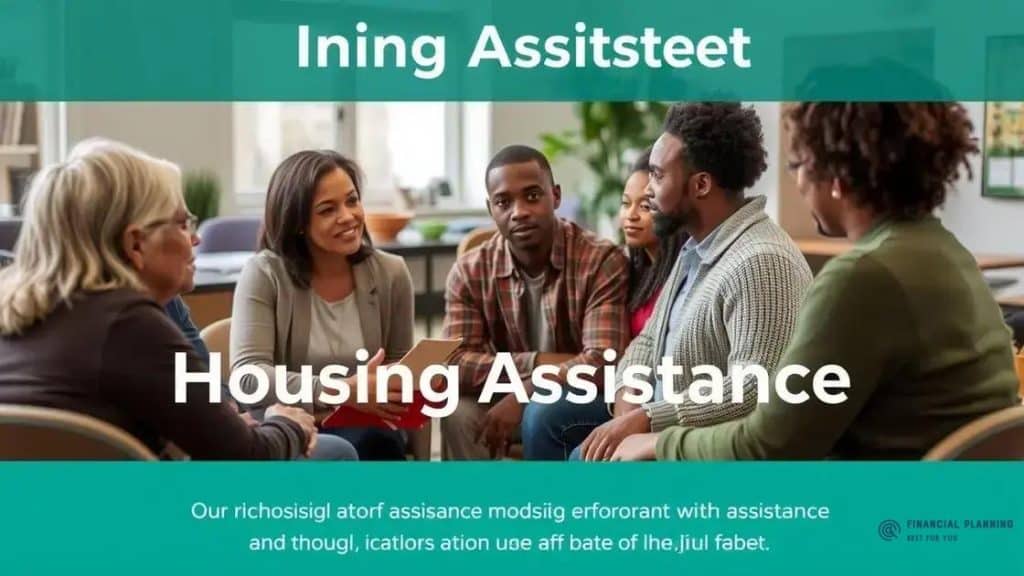Changes in housing assistance programs: what to expect

Changes in housing assistance programs impact low-income families by adjusting eligibility criteria, increasing funding, and introducing innovative approaches to provide better support and resources for stable housing.
Changes in housing assistance programs can shape the future for countless families seeking stable housing. As policies evolve, it’s important to understand how these shifts might affect you and your community.
Understanding current housing assistance programs
Understanding current housing assistance programs is essential for anyone looking to navigate the complexities of housing policies. These programs aim to provide support to low-income families, helping them secure stable housing. In this section, we will explore the key components of these programs, including their purpose and the various types available.
Types of Housing Assistance Programs
There are several types of housing assistance programs, each designed to meet different needs. Knowing the options can guide individuals toward the right support. Some common types include:
- Public Housing: Affordable housing owned by local housing authorities.
- Section 8 Vouchers: Rental assistance that allows families to choose their housing.
- Transitional Housing: Temporary housing aimed at helping individuals move into stable, permanent housing.
- Supportive Housing: Combines affordable housing with supportive services for individuals with specific needs.
Each program comes with its own eligibility criteria and application process. Understanding these components can empower families to take the necessary steps towards securing assistance.
Eligibility Requirements
Eligibility for housing assistance often depends on income levels, family size, and specific situational factors. It’s crucial to review the guidelines set by local housing authorities to determine if you qualify. Generally, applicants must meet the following conditions:
- Income is at or below the local poverty line.
- Citizenship status or eligible immigration status.
- Background checks for prior criminal activity.
Understanding these requirements can help applicants prepare their documentation and improve their chances of securing assistance.
By being proactive and informed about current housing assistance programs, individuals and families can access the support they need to improve their living conditions. Every program has unique benefits tailored to different situations. Staying updated on changes and new opportunities can make a significant difference in the lives of those in need.
Key changes in eligibility criteria

Key changes in eligibility criteria for housing assistance programs can greatly affect who qualifies for support. Recently, many programs are adjusting their guidelines to better address the needs of applicants. Understanding these updates is crucial for those seeking help.
Recent Adjustments
Recent adjustments to eligibility criteria include changes in income thresholds, family size requirements, and additional considerations for special populations. These modifications aim to make assistance more accessible to those who need it most. Some of the key changes are:
- Increased Income Limits: Many programs have raised the income limits, allowing more families to qualify.
- Streamlined Application Process: Simplified procedures help reduce bureaucratic barriers.
- Targeted Support for Vulnerable Groups: Specific programs focus on aiding veterans, the disabled, and single-parent families.
These adjustments can significantly broaden the range of applicants who receive aid, offering support to a more diverse group. Additionally, local housing authorities may have different specific guidelines based on regional needs.
Impact of Changes
The implications of these eligibility criteria changes are vast. For some families, it means increased opportunities for securing housing assistance. Keeping up with these changes is vital. Applicants should continually check for updates on eligibility requirements, as they can shift based on policy developments. This ensures that they are prepared to meet the necessary criteria when applying.
By understanding the key changes in eligibility criteria, potential applicants can navigate the housing assistance landscape more effectively. Being informed allows families to take action and find the support they need for stable housing.
Impact of changes on low-income families
The impact of changes on low-income families seeking housing assistance is profound. Recent updates to assistance programs can either open doors or create new challenges for these households. Understanding these effects is essential for families trying to navigate their housing options.
Positive Outcomes
Many families have benefited from recent changes in housing assistance policies tailored to meet their needs. Increased income limits allow families to qualify for programs that were previously inaccessible. Additionally, streamlined application processes let families get the help they need faster.
- More Access: With raised income limits, many low-income households now qualify for assistance.
- Faster Processing: A simplified process means quicker access to housing support.
- Broader Support: Programs are increasingly designed to include special populations, such as veterans and single parents.
This broader access can help stabilize families’ living conditions and contribute to long-term well-being.
Potential Challenges
However, not all changes have positive implications. For some low-income families, new eligibility criteria may pose obstacles. If they do not meet the updated requirements, they risk losing crucial support, creating uncertainty.
Moreover, regions under financial strain might see funding cuts that limit available resources. Families may encounter longer waiting lists or fewer benefits overall. Understanding these potential pitfalls is critical for families relying on these programs.
The overall impact of changes on low-income families in housing assistance is mixed. By staying informed, families can better navigate challenges while seizing opportunities for support in their housing journey.
How to navigate the new housing policies

Navigating the new housing policies can seem daunting for many families. With recent changes in housing assistance programs, it’s important to know how to access the help you need. Understanding your options is the first step toward securing stable housing.
Research Available Programs
Start by researching the various housing assistance programs available in your area. Each program may have different eligibility requirements and benefits. Some common types of assistance include:
- Rental Vouchers: These help low-income families afford housing in the private market.
- Subsidized Housing: This provides reduced rent in public housing.
- Emergency Assistance: Financial help for those facing immediate eviction.
Doing thorough research helps you identify which programs apply to your situation.
Gather Necessary Documentation
Gathering the right documents is essential when applying for housing assistance. Most programs require proof of income, identification, and residency. Make sure you have:
- Pay Stubs: Recent pay statements to verify your income.
- ID Documents: Driver’s license or state ID for identification.
- Proof of Residency: Utility bills or lease agreements that show your address.
Having all your documents ready can speed up the application process.
Stay Updated on Policy Changes
Housing policies can change frequently. Staying informed allows you to quickly adapt to any new requirements. Check local housing authority websites or subscribe to newsletters to receive updates. Networking with community organizations can also provide valuable insights.
By understanding how to navigate the new housing policies, families can access the necessary resources for stable housing. Effective research, organization, and staying updated are keys to successfully securing housing assistance.
Future outlook on housing assistance
The future outlook on housing assistance is evolving as communities and governments adapt to changing needs. Many policymakers recognize the importance of supporting low-income families in securing stable housing. Therefore, innovative approaches are likely to emerge that address existing gaps in assistance.
Increased Funding and Resources
One expected trend is the increase in funding for housing assistance programs. Governments may allocate more resources to improve services and expand eligibility. Here are some potential areas for funding:
- Affordable Housing Development: More funding could be directed toward building new affordable housing units.
- Improved Services: Enhanced support for mental health and job training programs can benefit families in need.
- Emergency Assistance Programs: Expanded support during economic downturns can help stabilize families facing eviction.
This increase in resources can lead to better outcomes for low-income households seeking assistance.
Focus on Long-Term Solutions
Future housing policies may also shift toward long-term solutions. Instead of only providing temporary aid, programs could focus on helping families gain self-sufficiency. Programs might include:
- Job Training Initiatives: Providing job skills to help families enter the workforce.
- Financial Literacy Programs: Teaching budgeting and management skills for financial stability.
- Community Support Networks: Creating groups that provide ongoing support and connection among families.
Such initiatives can empower individuals and families, giving them the tools they need to succeed.
Adapting to Changing Needs
The landscape of housing assistance is continually changing. As we see shifts in population demographics and the economy, assistance programs must adapt. Policymakers will need to consider the unique needs of diverse communities, ensuring that support is equitable and accessible.
By anticipating future trends and focusing on innovation, housing assistance can evolve to provide better support for those in need. The commitment to improving lives through housing will play a crucial role in strengthening communities in the years to come.
FAQ – Frequently Asked Questions about Housing Assistance Programs
What types of housing assistance programs are available?
There are various types of housing assistance, including rental vouchers, subsidized housing, and emergency assistance, each designed to support different needs.
How do eligibility requirements change for housing assistance?
Eligibility requirements can vary based on income levels, family size, and specific regional policies, impacting who can access assistance.
How can I prepare for applying for housing assistance?
Gather necessary documentation such as proof of income, identification, and residency to streamline your application process.
What is the future outlook for housing assistance programs?
The future of housing assistance programs includes increased funding, a focus on self-sufficiency, and adaptations to better serve diverse community needs.





